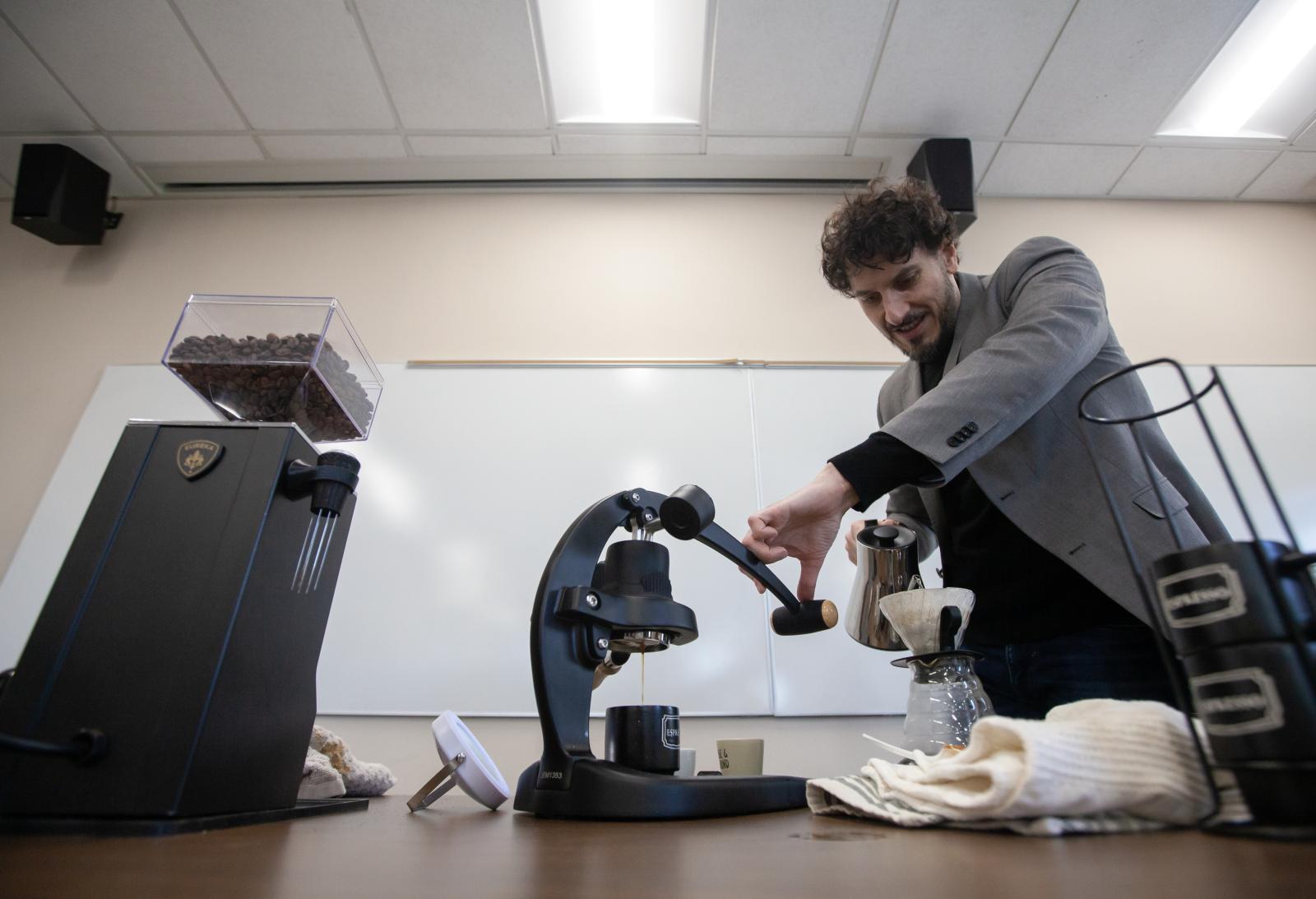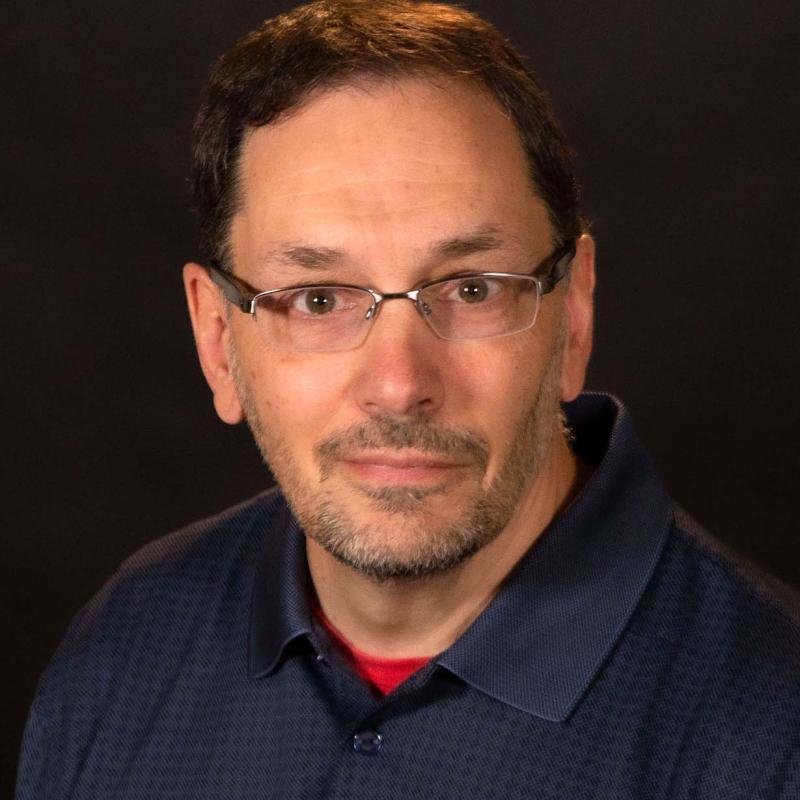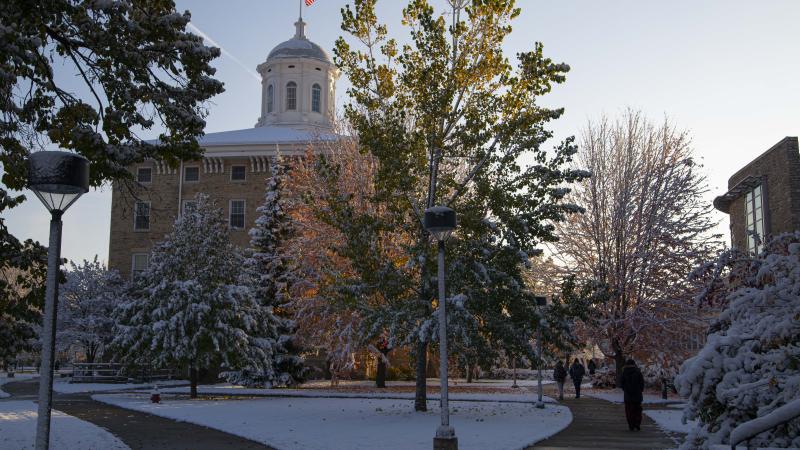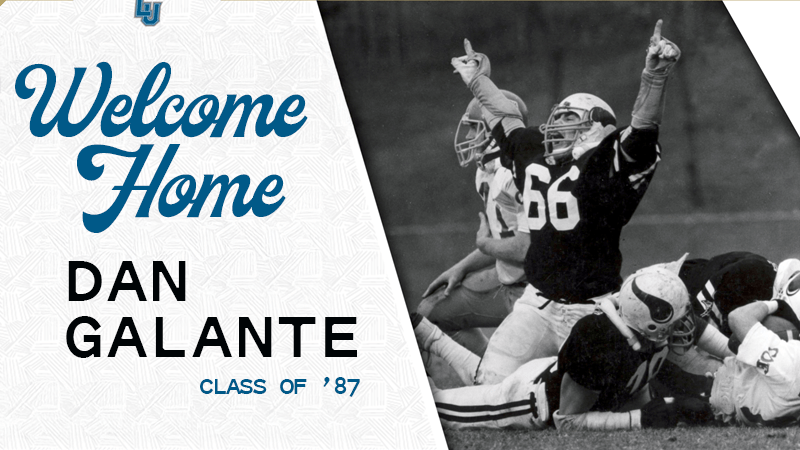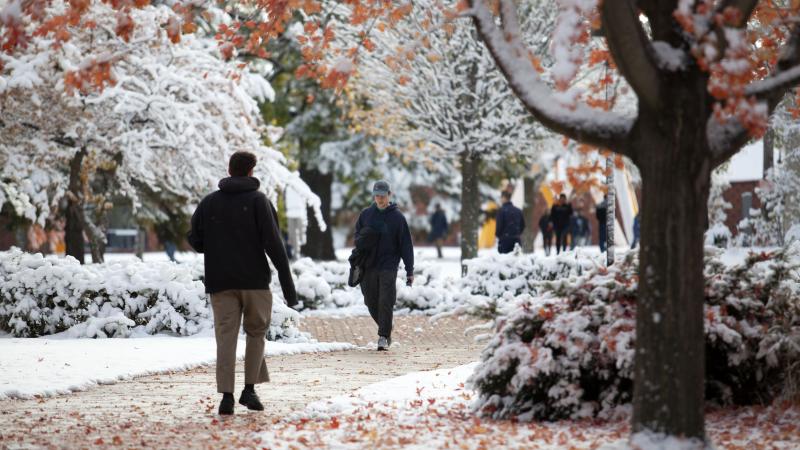Greg Milano loves coffee. Drinking it, sure. But there’s also the daily pursuit of the perfect brew, a hobby—OK, perhaps obsession—he’s been immersed in since studying in Italy as an undergrad two decades ago.
Over a cappuccino, or perhaps a cortado or a red eye, the visiting assistant professor of history at Lawrence University will tell you about coffee’s earliest days, the coffea arabica shrub growing wild in Ethiopia before making its way to Yemen 1,000-plus years ago; he’ll tell you about its growth into a global commodity, its consumption correlating with the rise of the Industrial Revolution; and he’ll tell you about coffee’s influences in almost every corner of modern life, from the unionizing of Starbucks employees to the huge growth in coffee consumption among people 40 and under over the past decade.
Those conversations were so frequent that Milano began contemplating a history course built through the lens of the coffee culture. With time on his hands during the pandemic, he put the pieces of such a course together. It launched last year, drawing 16 coffee-curious Lawrence students.
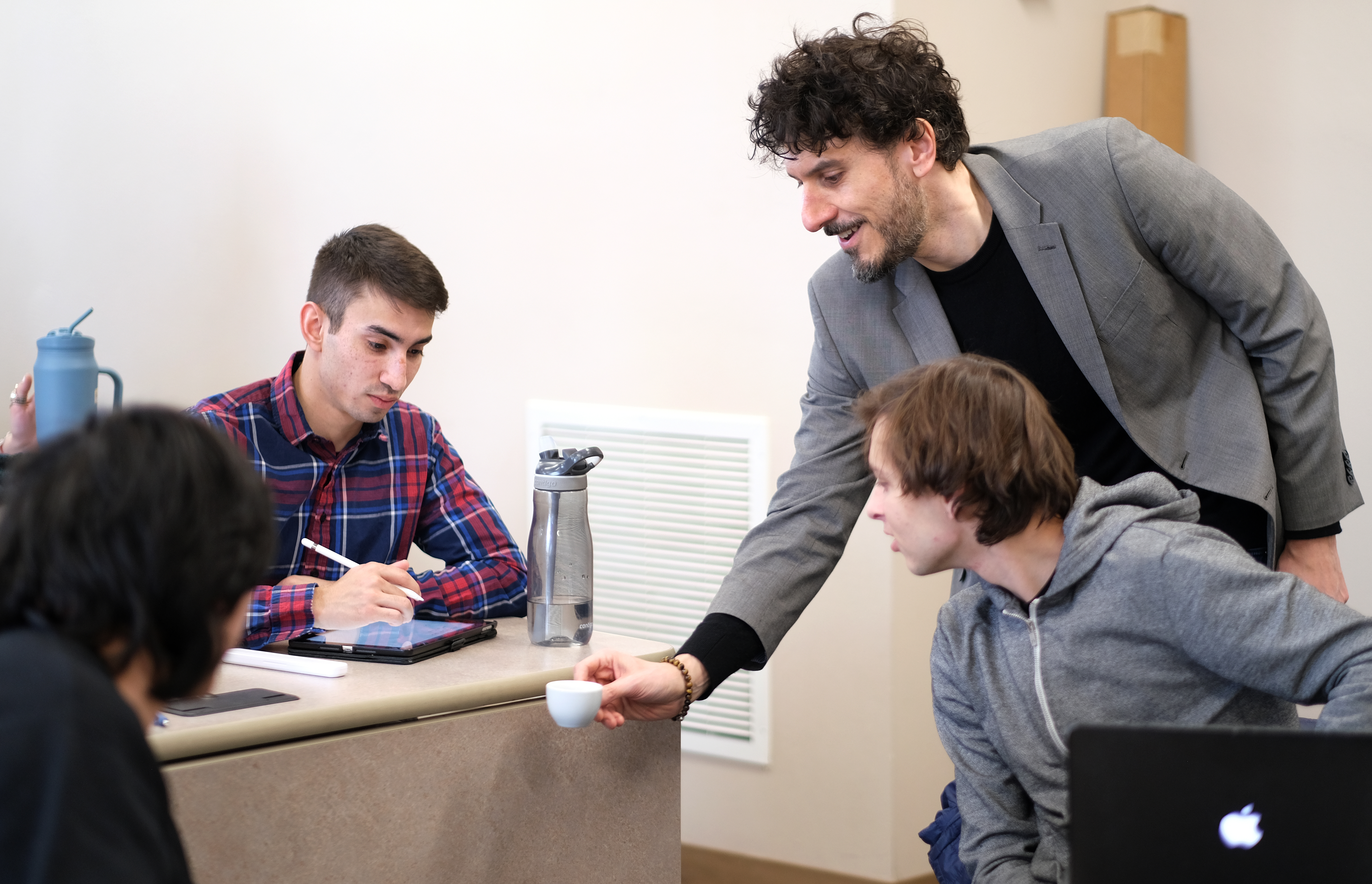
Greg Milano shows students a cup of espresso as he talks coffee in class.
Word of mouth about the course brought new interest, and Milano’s second go at Coffee, Liquid Modernity, offered during the current Winter Term, drew 39 students.
“Several are history majors, but the majority are not history majors,” Milano said. “We look at literature, history, economics. It’s very interdisciplinary in nature. So, students are coming from econ, sociology, anthropology, a whole variety of interests.”
A deep dive into coffee
It’s not unusual for a history course to focus on a single commodity—oil and sugar being prime examples. But coffee has a different feel, a fresh relevance for students, many of whom have grown up as coffee drinkers, with a Starbucks or a Dunkin’ or a homegrown coffee shop never far away.
“We track the history and the whole movement of coffee from a farm in South America to the cup at the local coffee shop, and it allows the student to place themselves in a commodity chain to really get a sense of all the different hands and all the different labor involved from the time that seed is put in the ground,” Milano said. “It’s another way for the student to make the abstraction of something like the global economy very much concrete.”
Immerse yourself in different times and places to develop important perspectives on the world past and present.
Brigid Buist, a senior majoring in anthropology, calls herself an avid coffee drinker who was drawn to Milano’s course after learning about the marketing of coffee in the United States during a Latinx Studies course taught by Thelma Jimenez-Anglada.
“As an anthropology major, I’m interested in the cultural aspects of coffee and its history,” Buist said. “I find it valuable to examine how, as such a large global commodity, coffee has helped shape the world as we know it today.”
A lifelong passion
Milano said he grew up fascinated by coffee. But it was while studying abroad in Italy as a New York University undergraduate in the early 2000s that he fell deeply, hopelessly in love with coffee. He lived in Florence and found the coffee shop scene captivating, from the beverage options to the lively, daily conversations about soccer, Formula 1 racing, and politics.
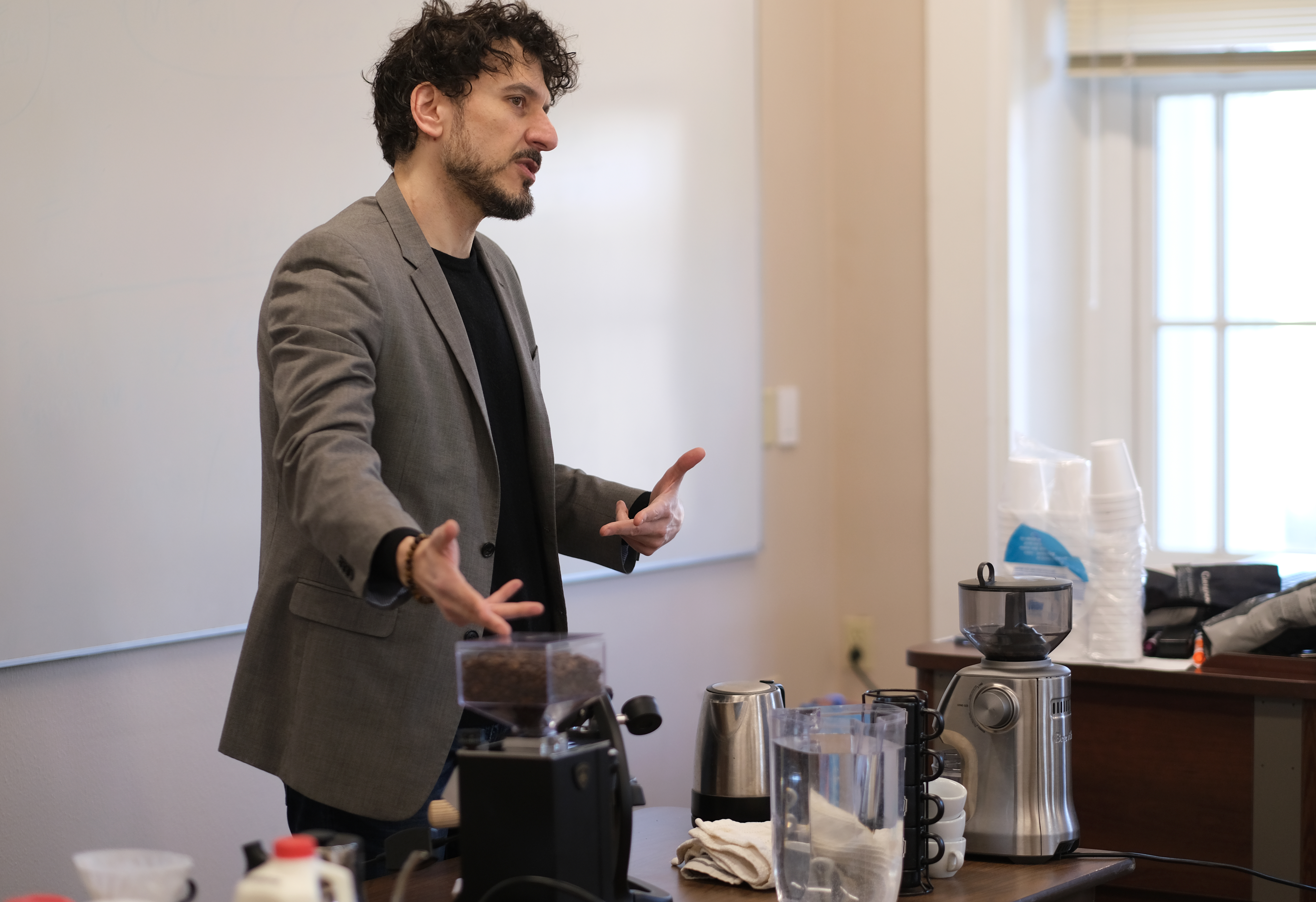
Greg Milano on embracing the coffee culture in Italy as an undergrad: "I returned to the U.S. and basically have tried for the better part of 20 years to replicate at least the flavor and style of coffee that was being brewed in those shops."
“I was really in love with that whole environment, that whole scene,” he said. “From there, I returned to the U.S. and basically have tried for the better part of 20 years to replicate at least the flavor and style of coffee that was being brewed in those shops. And over time I’ve learned more and more about not only the machines and the kind of techniques that are required to produce that style of coffee, but also about the whole coffee trade.”
In one of his course sessions, Milano brought an espresso maker to class for a demonstration of techniques he’s mastered through the years.
Keeping it fresh
In the final weeks of the course, students are asked to develop a digital presentation that explores one aspect of the coffee trade. The students then cast votes for their favorite, with the winner getting a special coffee prize courtesy of Milano.
At the close of last year’s course, Avery Greene, a double major in chemistry and history, was the recipient of a bag of Ethiopian coffee for her mapping project that examined the economics of why coffee shops are often grouped so close together. She played off the popularity of the Geoguessr geography game that has players guess locations from Google Street View imagery.
“I wanted it to be fun to watch,” Greene said.
Now a senior, Greene said Milano’s course correlated well with an organic chemistry course she was taking at the time, and a year later, she finds what she took from the coffee course to be helpful in a current biochemistry course.
“We discussed stimulants and depressants and their effects on the chemistry of biological systems,” Greene said. “Even though I took this class three terms after the coffee course, I still was able to reflect and integrate my knowledge and background from it into biochemistry. My chemistry friends are definitely sick of hearing me tell coffee history stories.”
